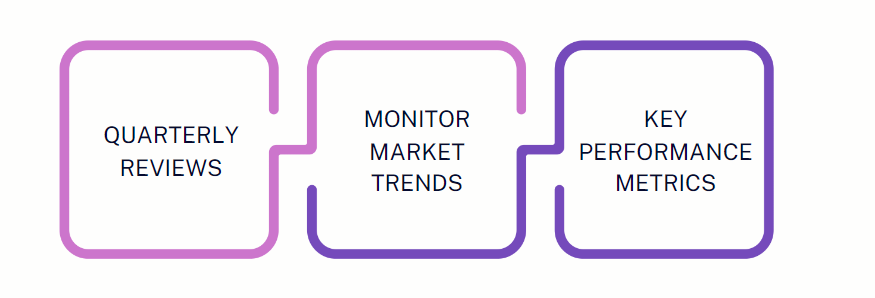As a product manager, one of your biggest responsibilities includes prioritizing features and initiatives. Without a clear prioritization strategy, your team will struggle to tackle competing demands and can end up confused and misaligned. You need to make sure that you intervene to balance short-term demands with the long-term product vision.

One of the best ways to do this is through a product roadmap. Keep reading to learn about how to make the most out of your product roadmap, common prioritization frameworks, and strategies for involving stakeholders.
The importance of prioritization
Without a clear prioritization strategy, your team can end up sidetracked. Prioritization paves the way towards progress on short- and long-term goals by:
- Helping teams focus on delivering the most valuable features first
- Preventing resource wastage on low-impact tasks
- Aligning the team with the product vision and business objectives
- Aiding in decision-making by providing a clear framework for evaluating trade-offs
A well-structured roadmap with prioritized tasks keeps the product moving toward its strategic objectives. This focus also fosters a more cohesive and motivated team.
Common prioritization frameworks
When prioritizing features, you want to adopt a systematic and repeatable process. To this end, many PMs adopt a commonly used framework. The three most popular frameworks are RICE, MoSCoW, and value versus effort.
In a nutshell,
- RICE (Reach, Impact, Confidence, and Effort) allows you to score and rank initiatives based on their potential impact and the effort required
- MoSCoW categorizes features into must have, should have, could have, and won’t have to help you focus on what’s essential
- Value versus effort compares the potential value of a feature against the effort needed to implement it. It’s a great way to identify high-value, low-effort opportunities, for quick market wins
Let’s assume you are deciding on a new reporting feature. Using RICE, you’d evaluate its reach, impact on users, confidence in success, and required effort. With MoSCoW, you’d classify it as a “must have,” “should have,” “could have,” or “won’t have” based on urgency. Value versus effort helps weigh its user and business value against the effort needed, identifying if it’s a quick win.
Balancing short-term wins with long-term goals
Short-term wins can drive immediate value and keep stakeholders engaged. However, they can also backfire and divert attention from the broader product vision. The key is to find strategies that allow you to address immediate needs without compromising long-term objectives. To do this:

- Prioritize features that offer quick wins but also contribute to the long-term vision
- Use a mix of small, incremental improvements and larger strategic initiatives in your roadmap
- Allocate a portion of each sprint to work on foundational elements that support future growth
- Regularly review the roadmap to ensure short-term efforts align with long-term objectives
Your strategy should guide you to consistently deliver value consistently while laying the groundwork for future success.
Stakeholder involvement in prioritization
Involving stakeholders in your prioritization process enables you to secure buy-in and make sure that your roadmap aligns with broader business goals. However, managing diverse opinions and expectations can be challenging. To tackle this, create a structured process for stakeholder involvement.
Facilitate productive discussions and use the insights from these discussions to make data-driven decisions that support the product’s success by:
- Scheduling regular roadmap review meetings with key stakeholders to gather input and align on priorities
- Using data and clear criteria, such as business impact and customer value, to support prioritization decisions
- Creating a transparent process that allows stakeholders to understand how and why decisions are made
- Setting expectations early on, clarifying that not every request can be a top priority
Continuous reassessment of the product roadmap
A product roadmap isn’t set in stone. Think of it as a dynamic tool that evolves with feedback, market changes, and shifting priorities.
Make sure that you regularly revisit it and adjust it in accordance with user and business needs. The following best practices can prove useful for your workflow as well:

prioritization
- Schedule quarterly reviews to assess progress
- Monitor market trends and competitor activities to identify areas that may require strategic adjustments
- Use key performance metrics to evaluate the success of recent initiatives
Key takeaways
Effect product roadmap prioritization lets you balance immediate needs with long-term goals. It also takes away unnecessary confusion and helps you make informed decisions that drive product success.
Try to remember these key points:
- Use prioritization frameworks (RICE, MoSCoW, and value versus effort) to make data-driven decisions
- Balance short-term wins with a long-term vision to maintain steady progress
- Involve stakeholders through structured processes to ensure alignment and buy-in
- Regularly reassess and adjust the roadmap based on feedback and market changes
Featured image source: IconScout